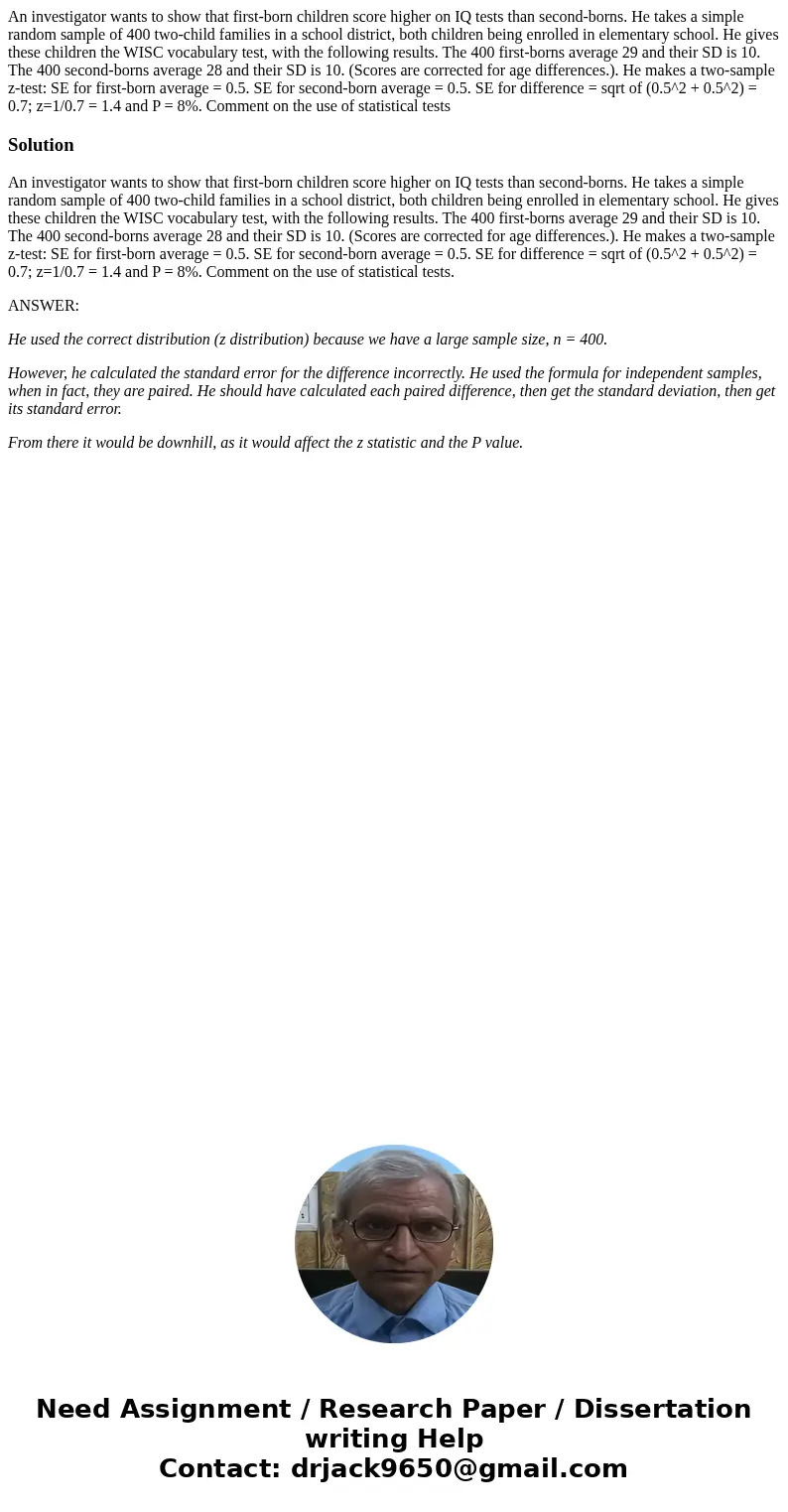An investigator wants to show that firstborn children score
An investigator wants to show that first-born children score higher on IQ tests than second-borns. He takes a simple random sample of 400 two-child families in a school district, both children being enrolled in elementary school. He gives these children the WISC vocabulary test, with the following results. The 400 first-borns average 29 and their SD is 10. The 400 second-borns average 28 and their SD is 10. (Scores are corrected for age differences.). He makes a two-sample z-test: SE for first-born average = 0.5. SE for second-born average = 0.5. SE for difference = sqrt of (0.5^2 + 0.5^2) = 0.7; z=1/0.7 = 1.4 and P = 8%. Comment on the use of statistical tests
Solution
An investigator wants to show that first-born children score higher on IQ tests than second-borns. He takes a simple random sample of 400 two-child families in a school district, both children being enrolled in elementary school. He gives these children the WISC vocabulary test, with the following results. The 400 first-borns average 29 and their SD is 10. The 400 second-borns average 28 and their SD is 10. (Scores are corrected for age differences.). He makes a two-sample z-test: SE for first-born average = 0.5. SE for second-born average = 0.5. SE for difference = sqrt of (0.5^2 + 0.5^2) = 0.7; z=1/0.7 = 1.4 and P = 8%. Comment on the use of statistical tests.
ANSWER:
He used the correct distribution (z distribution) because we have a large sample size, n = 400.
However, he calculated the standard error for the difference incorrectly. He used the formula for independent samples, when in fact, they are paired. He should have calculated each paired difference, then get the standard deviation, then get its standard error.
From there it would be downhill, as it would affect the z statistic and the P value.

 Homework Sourse
Homework Sourse